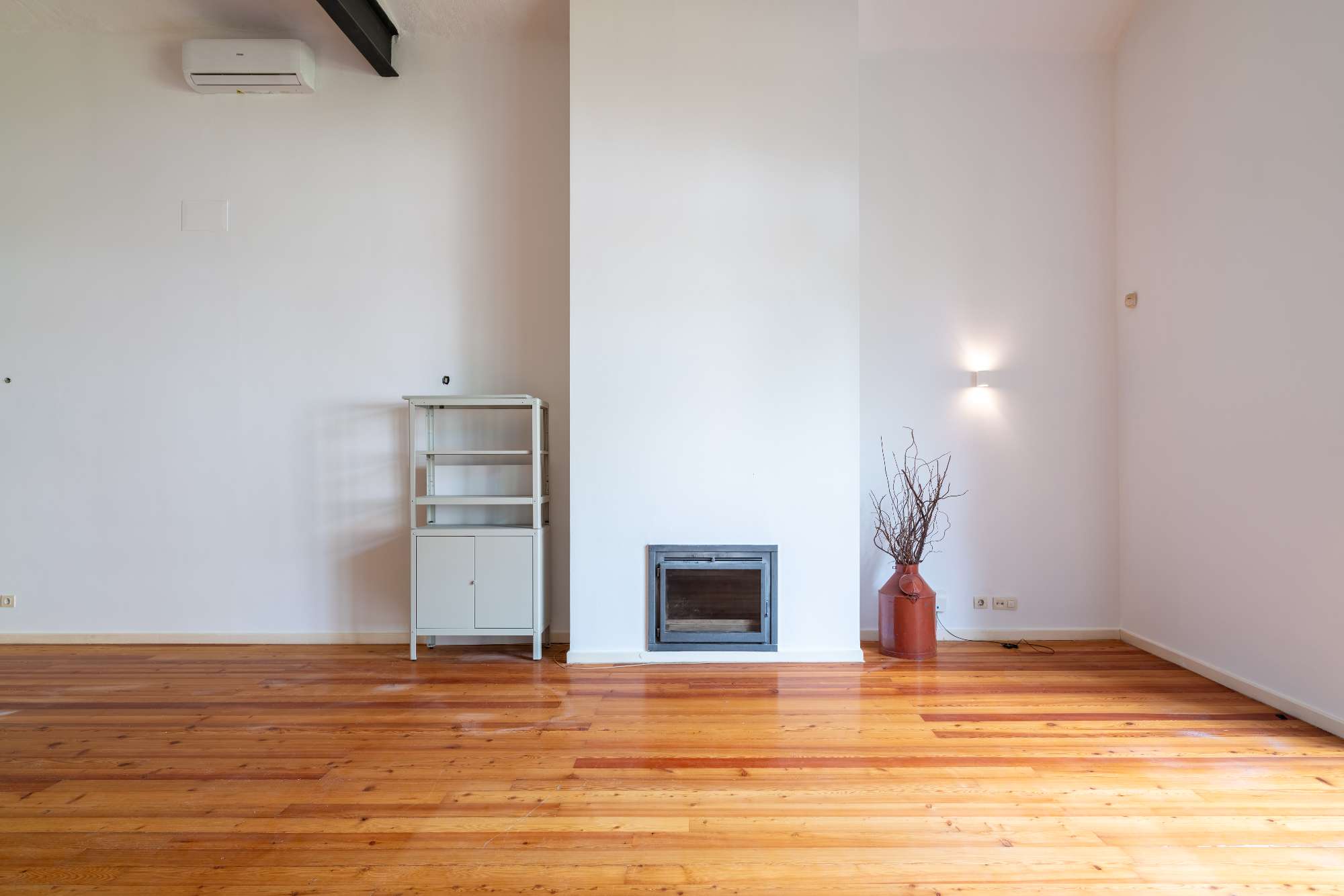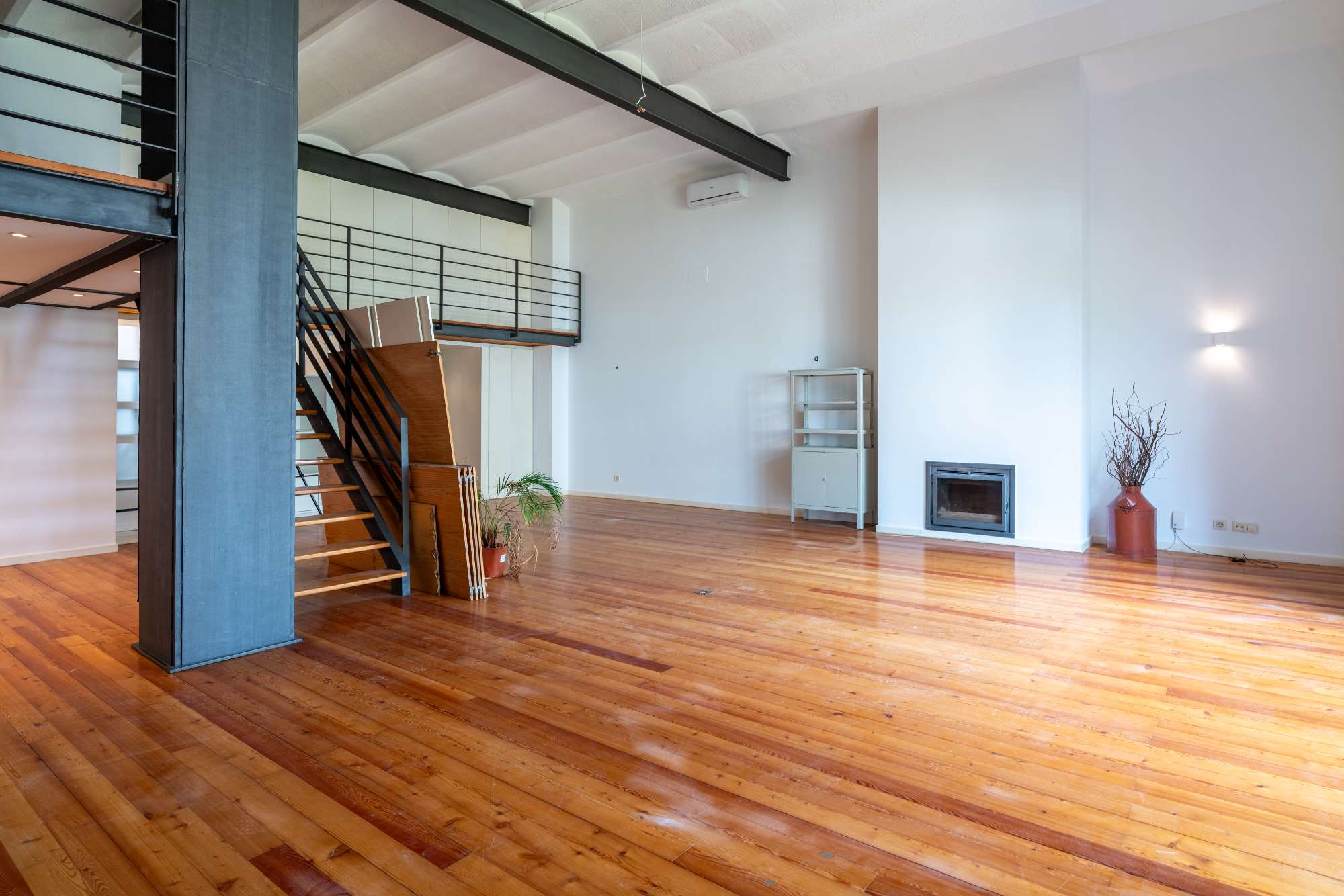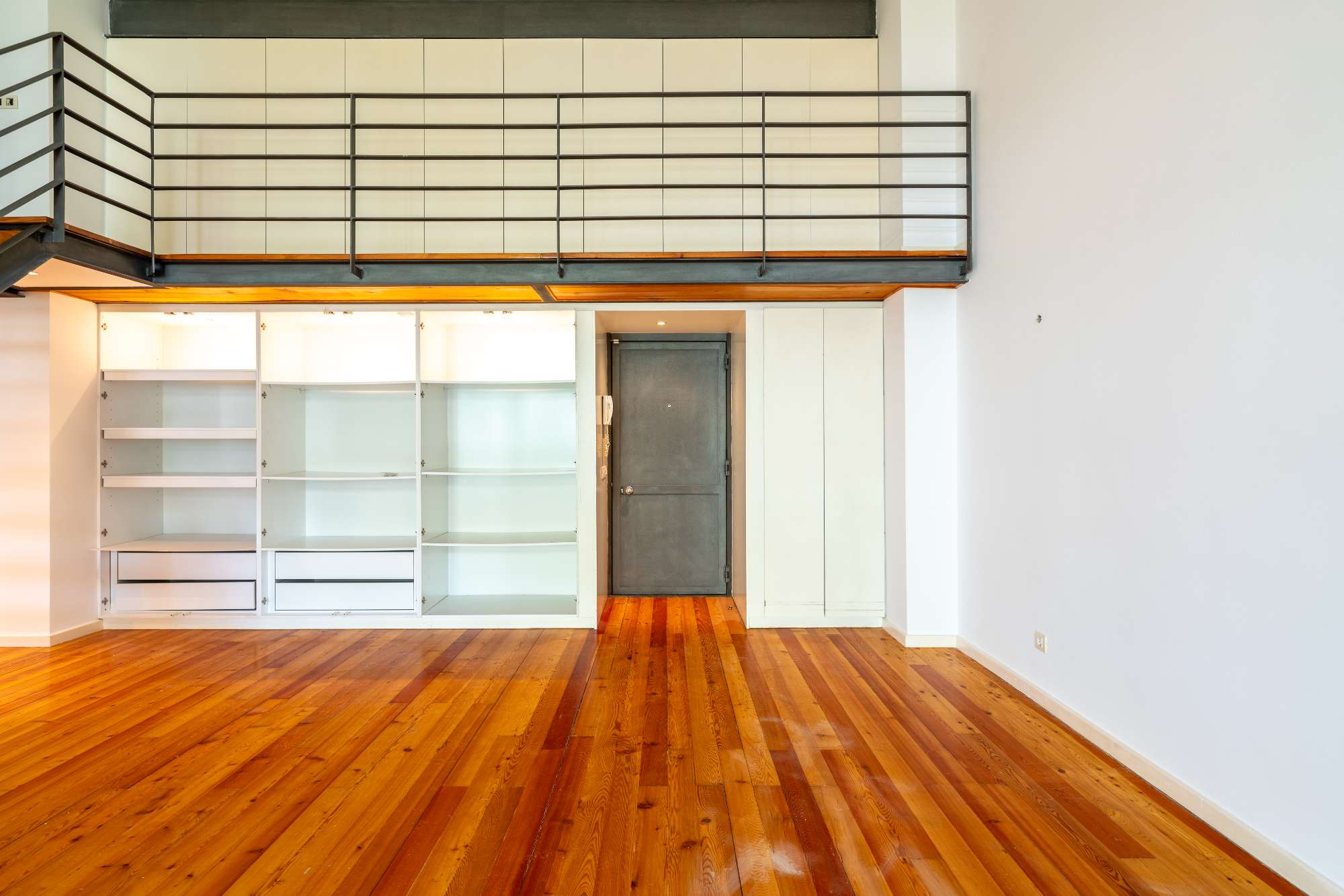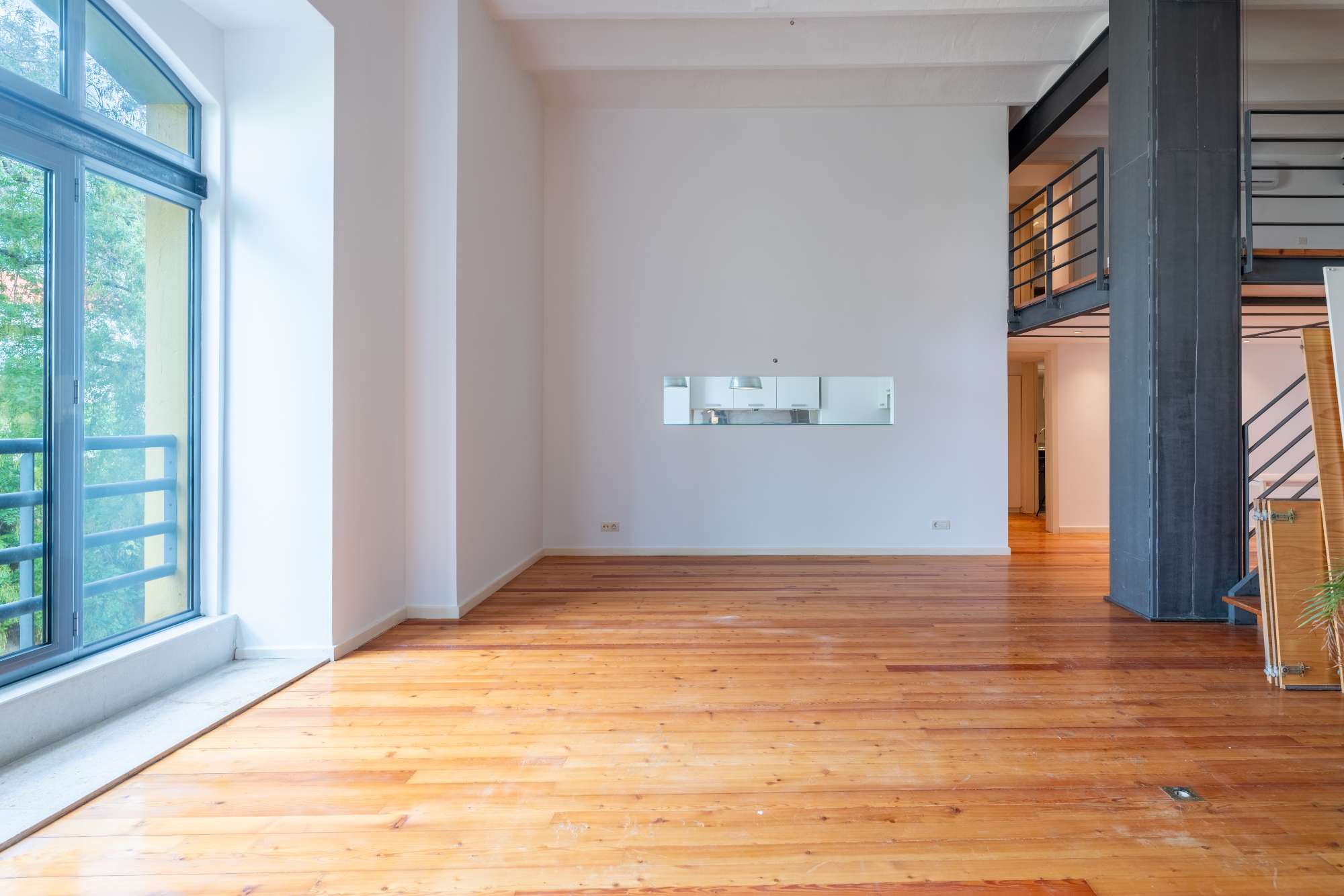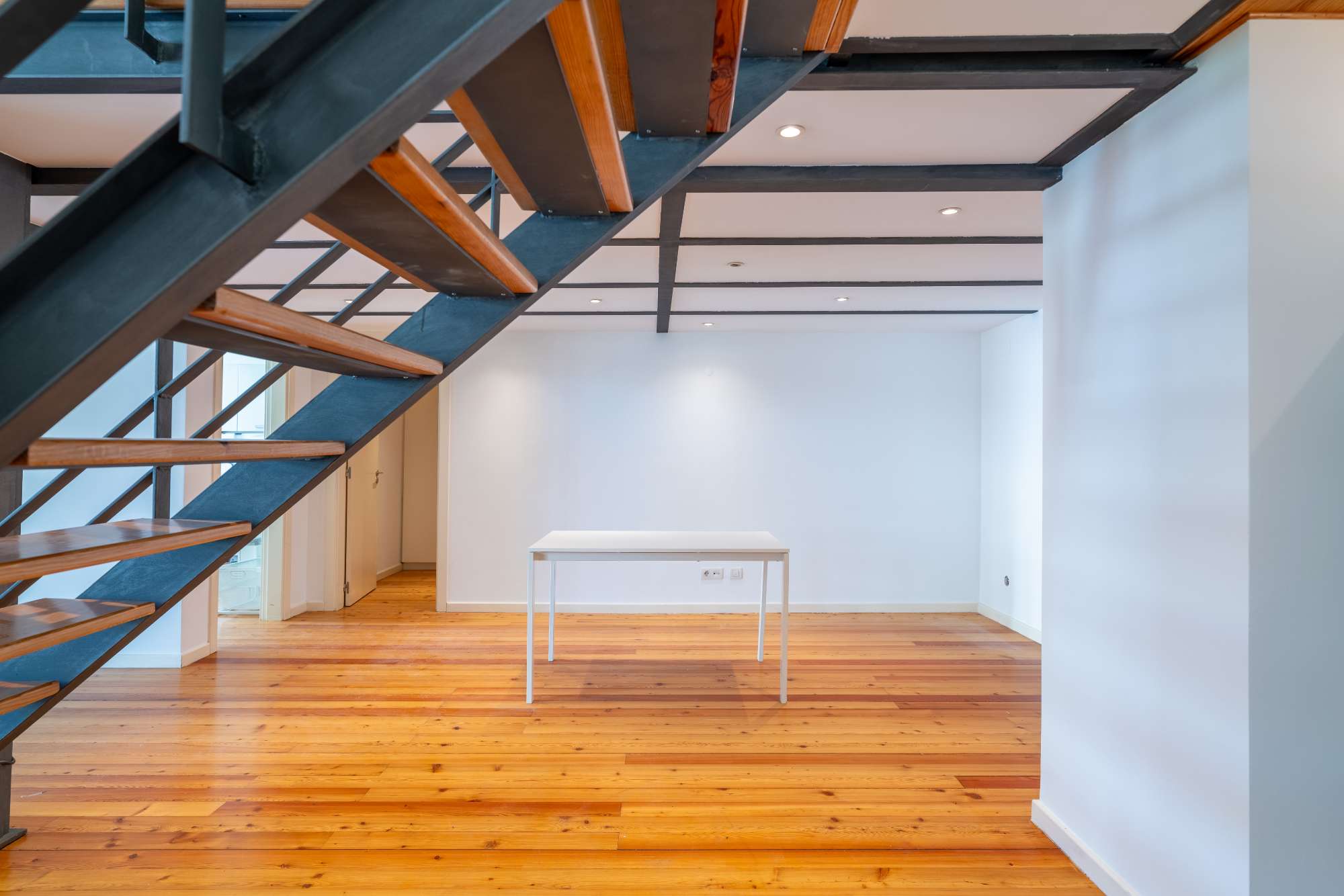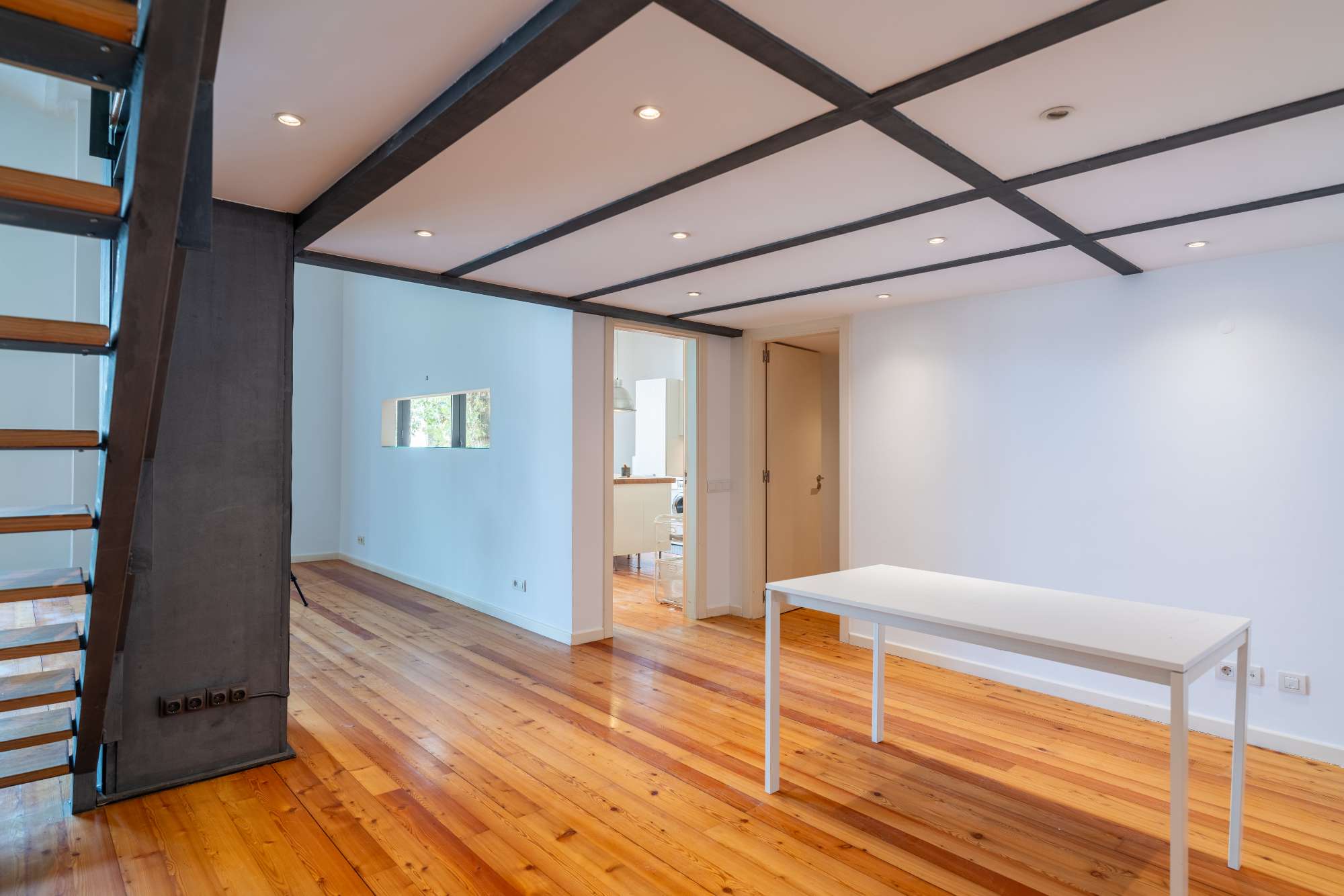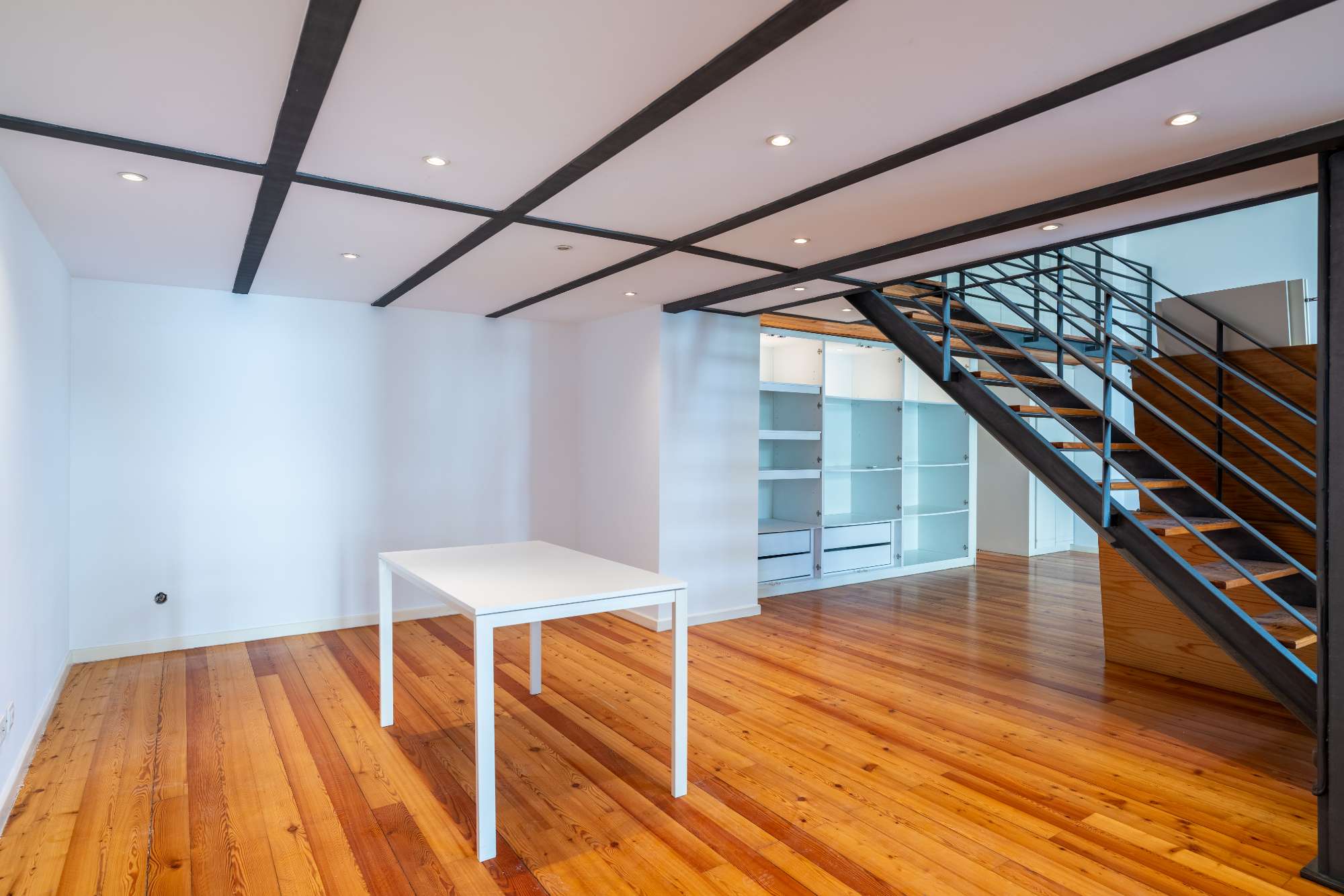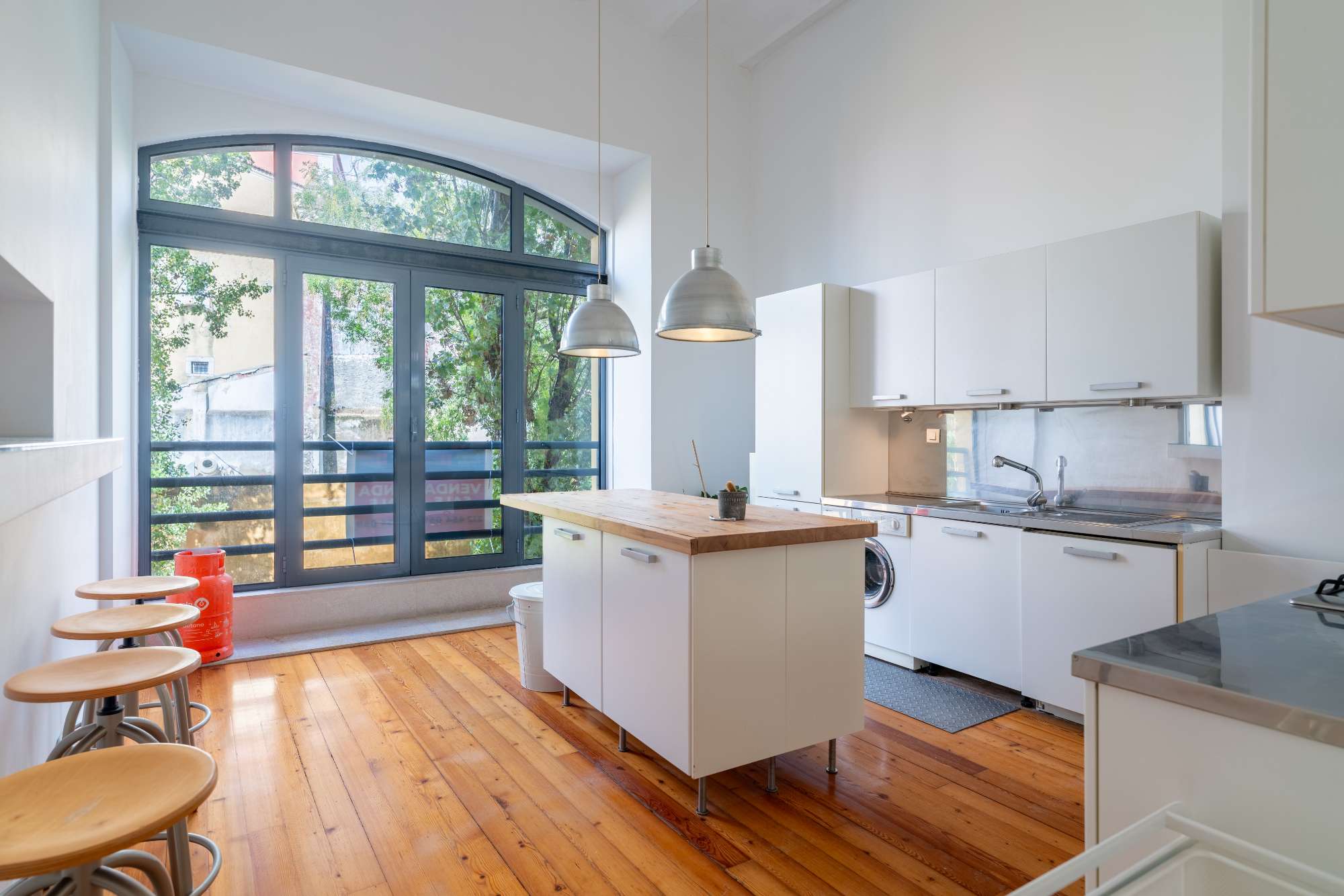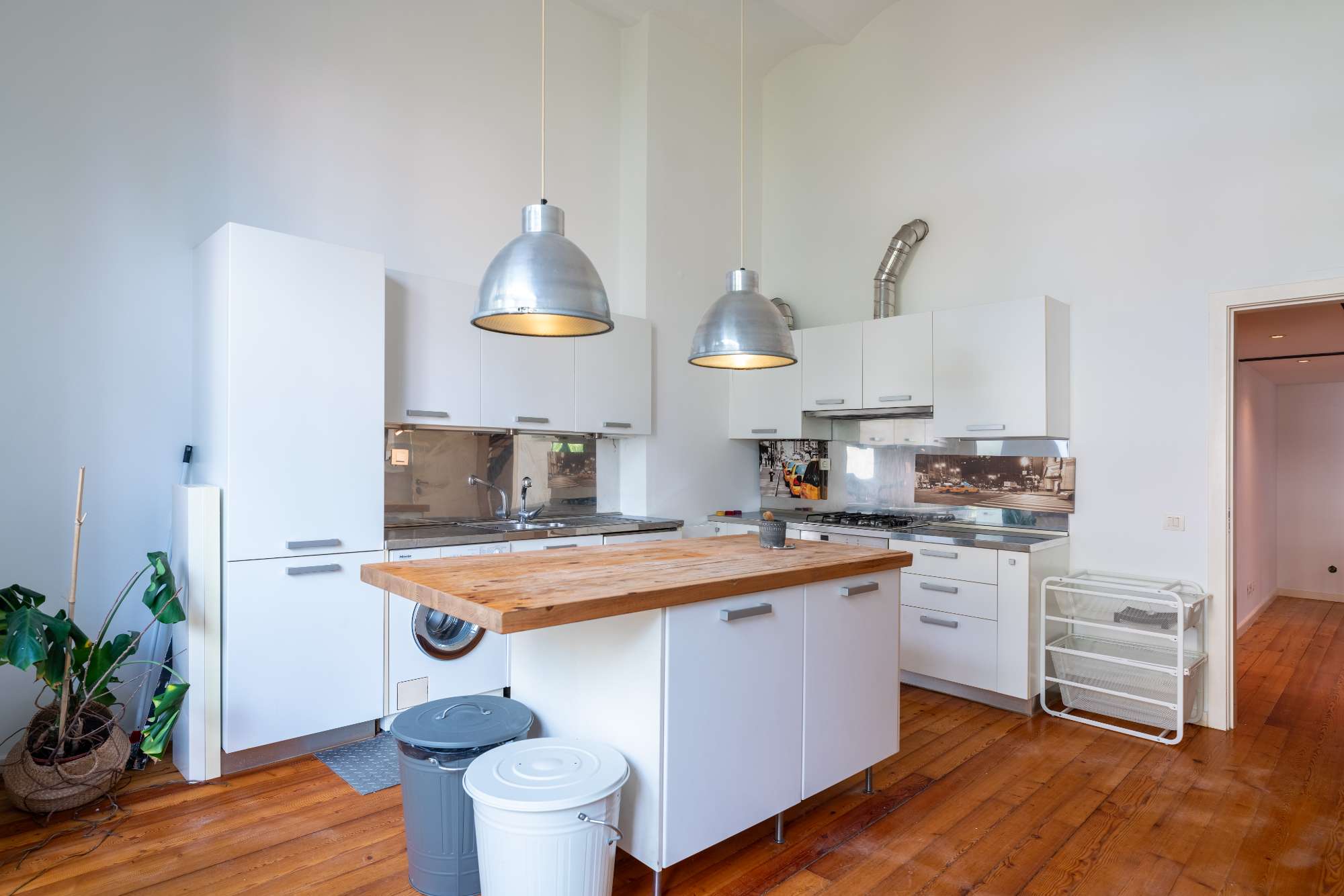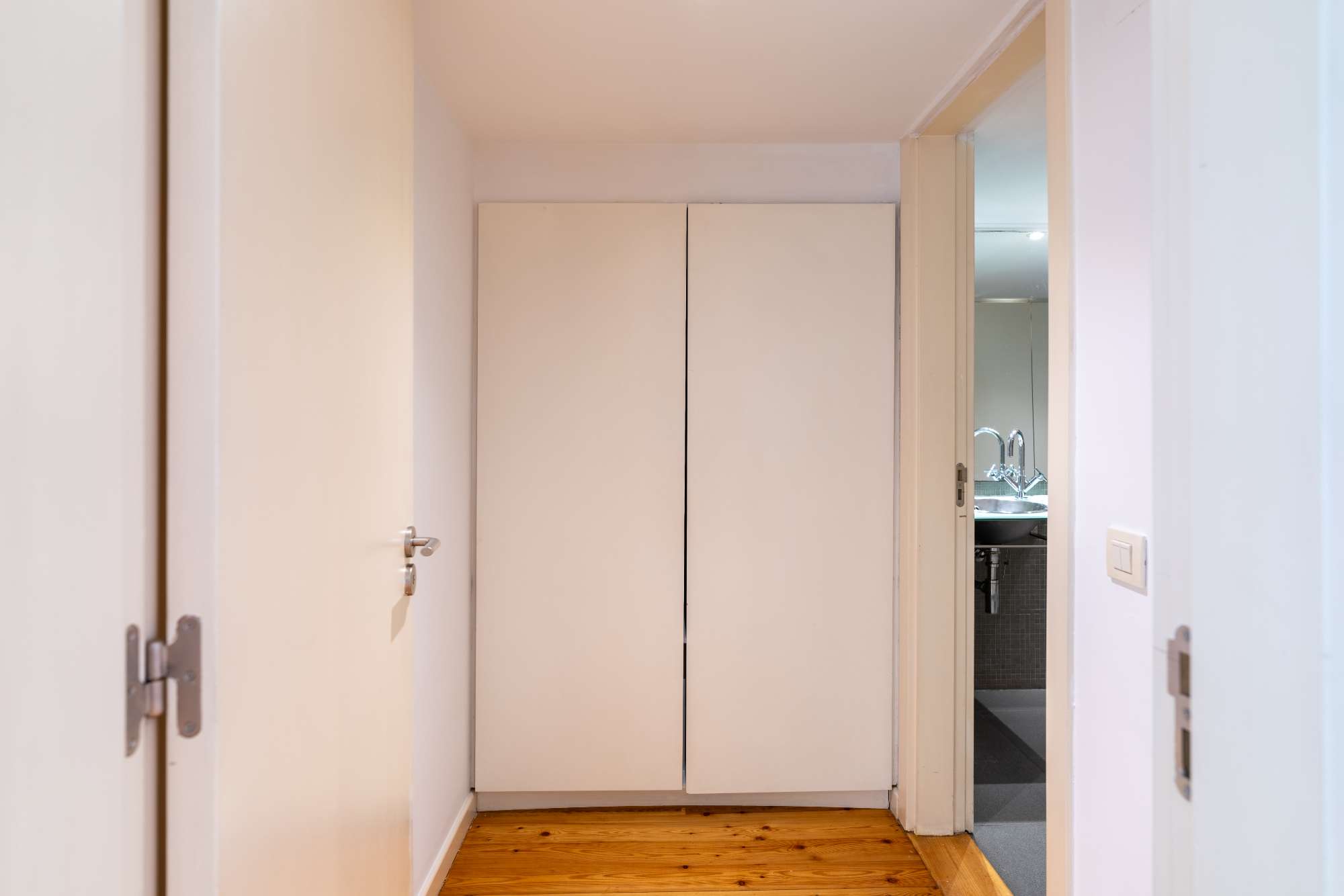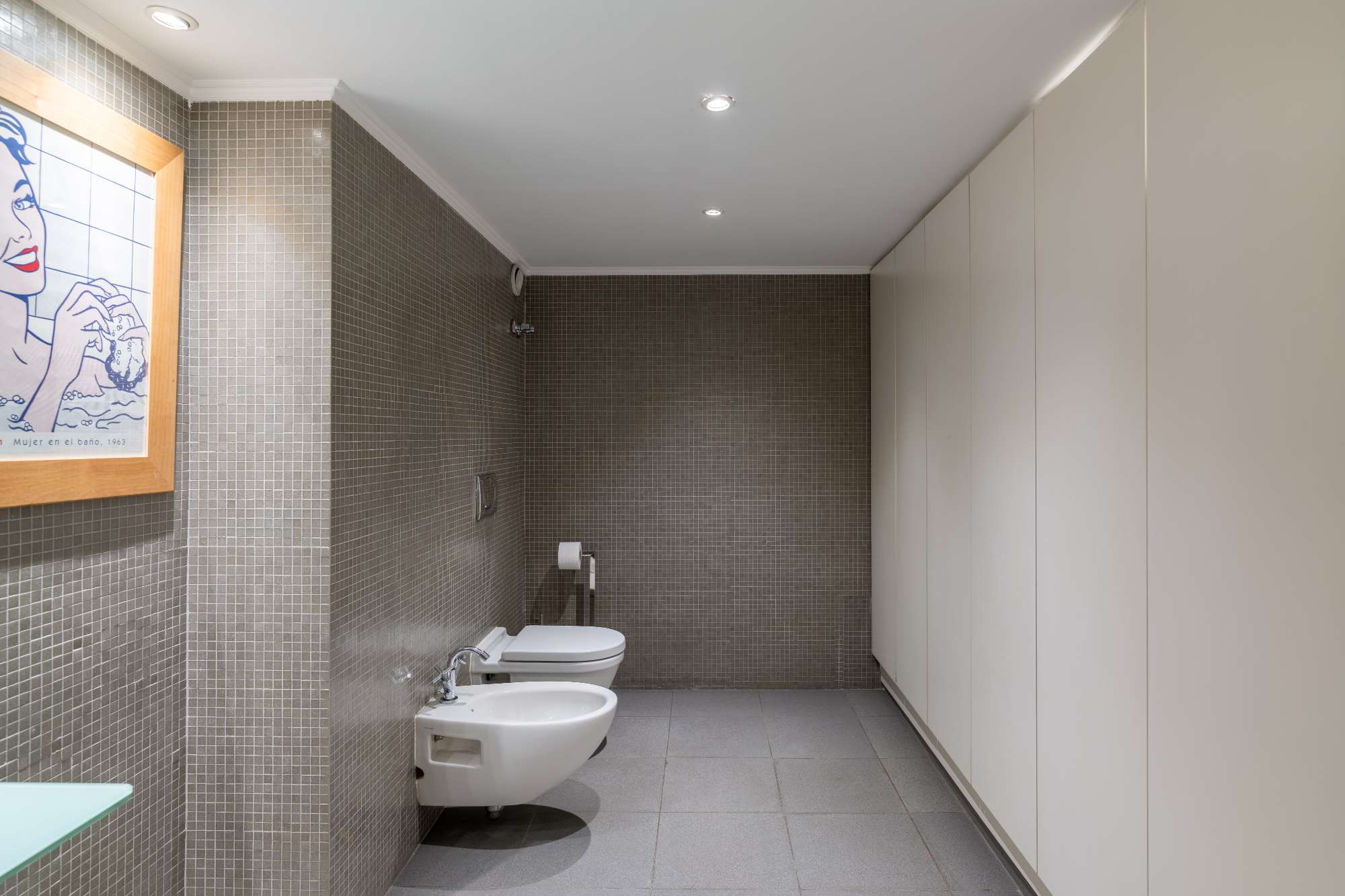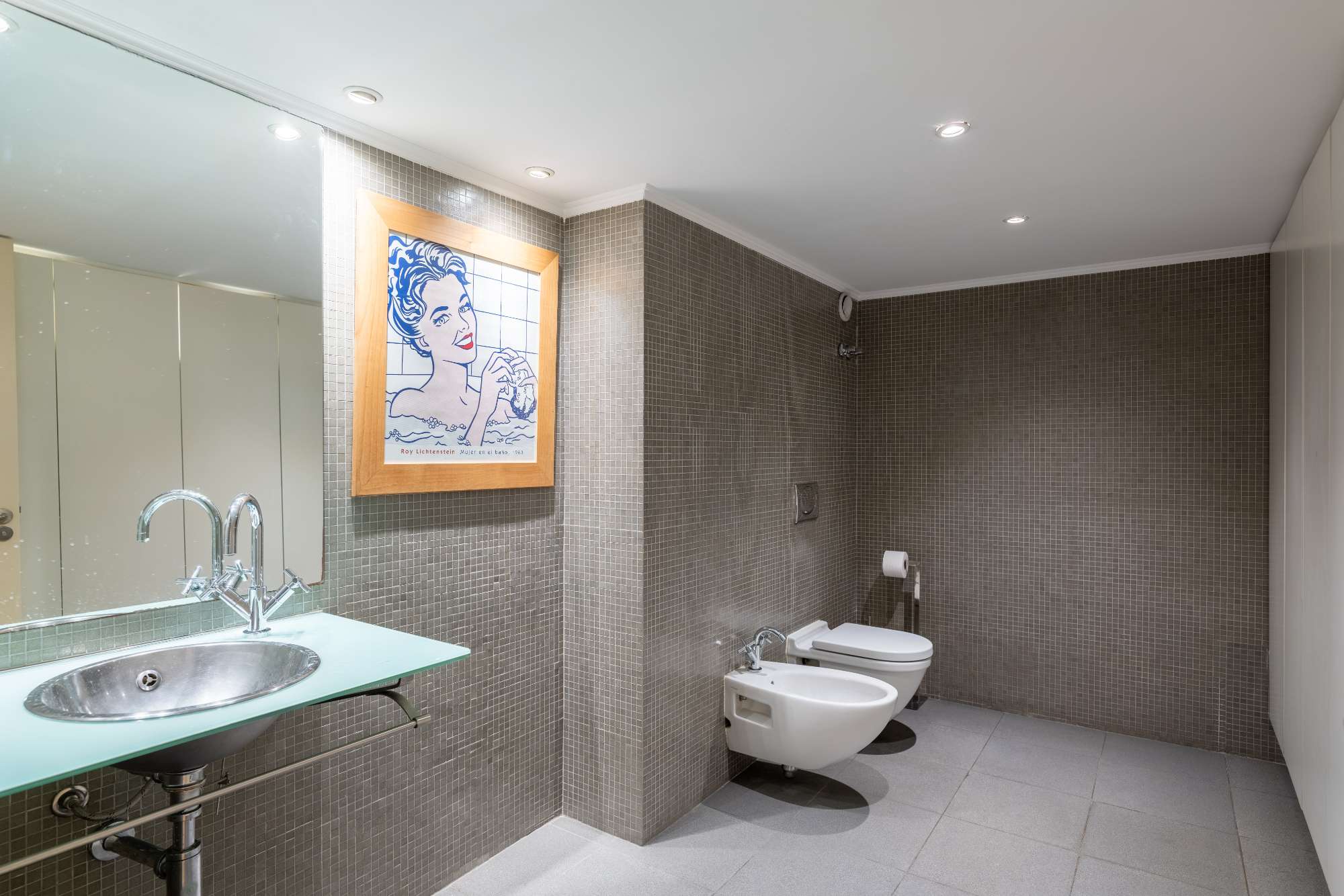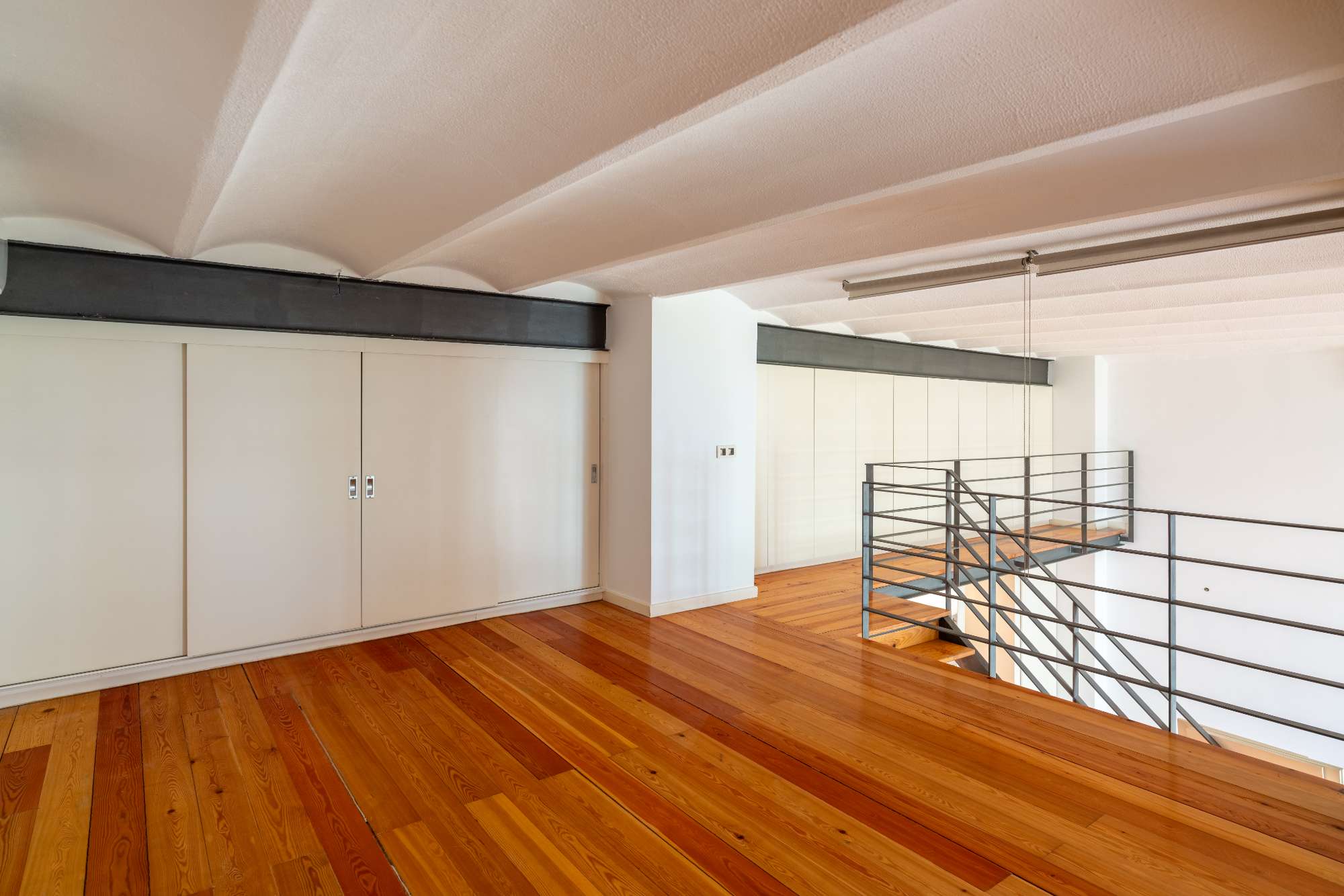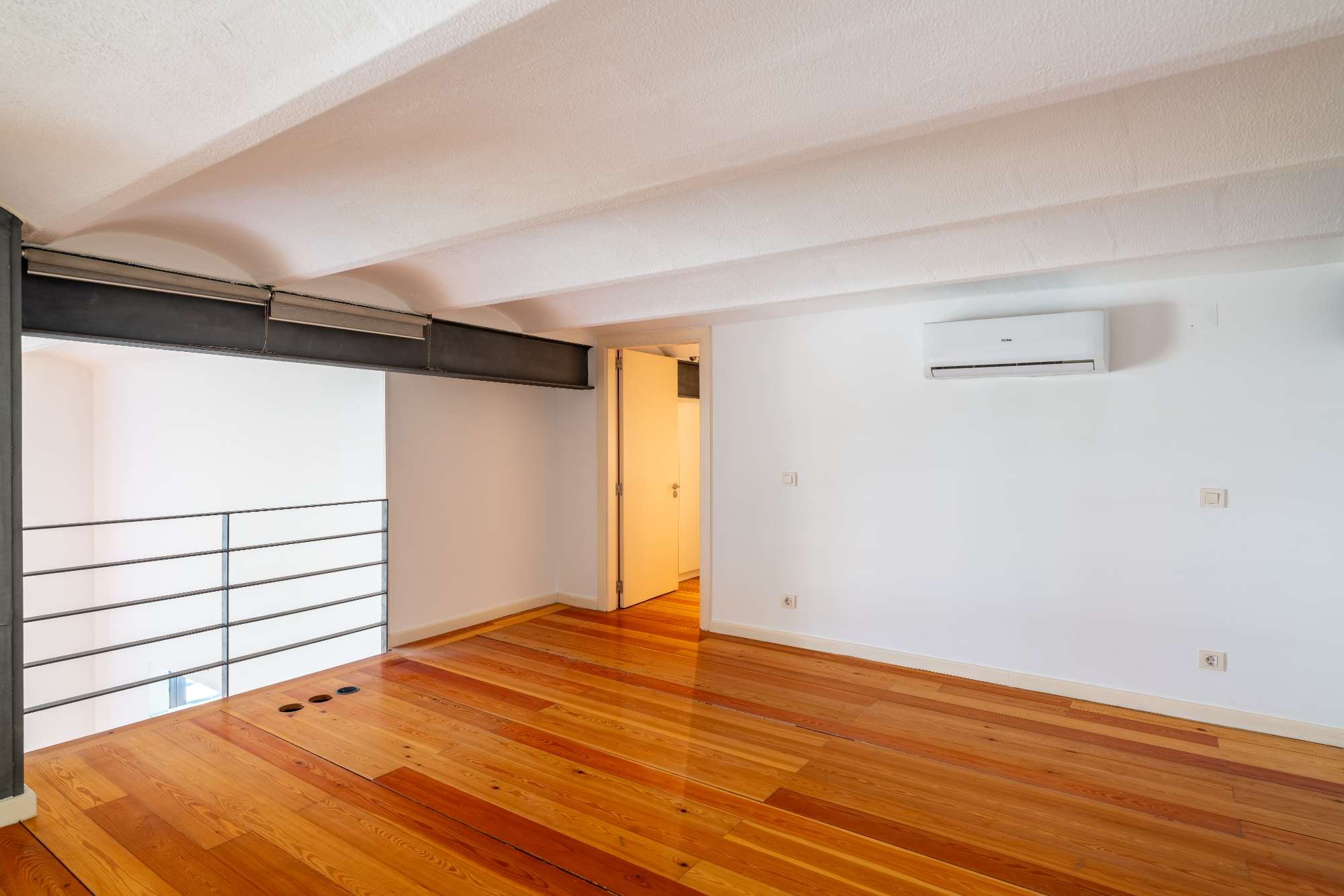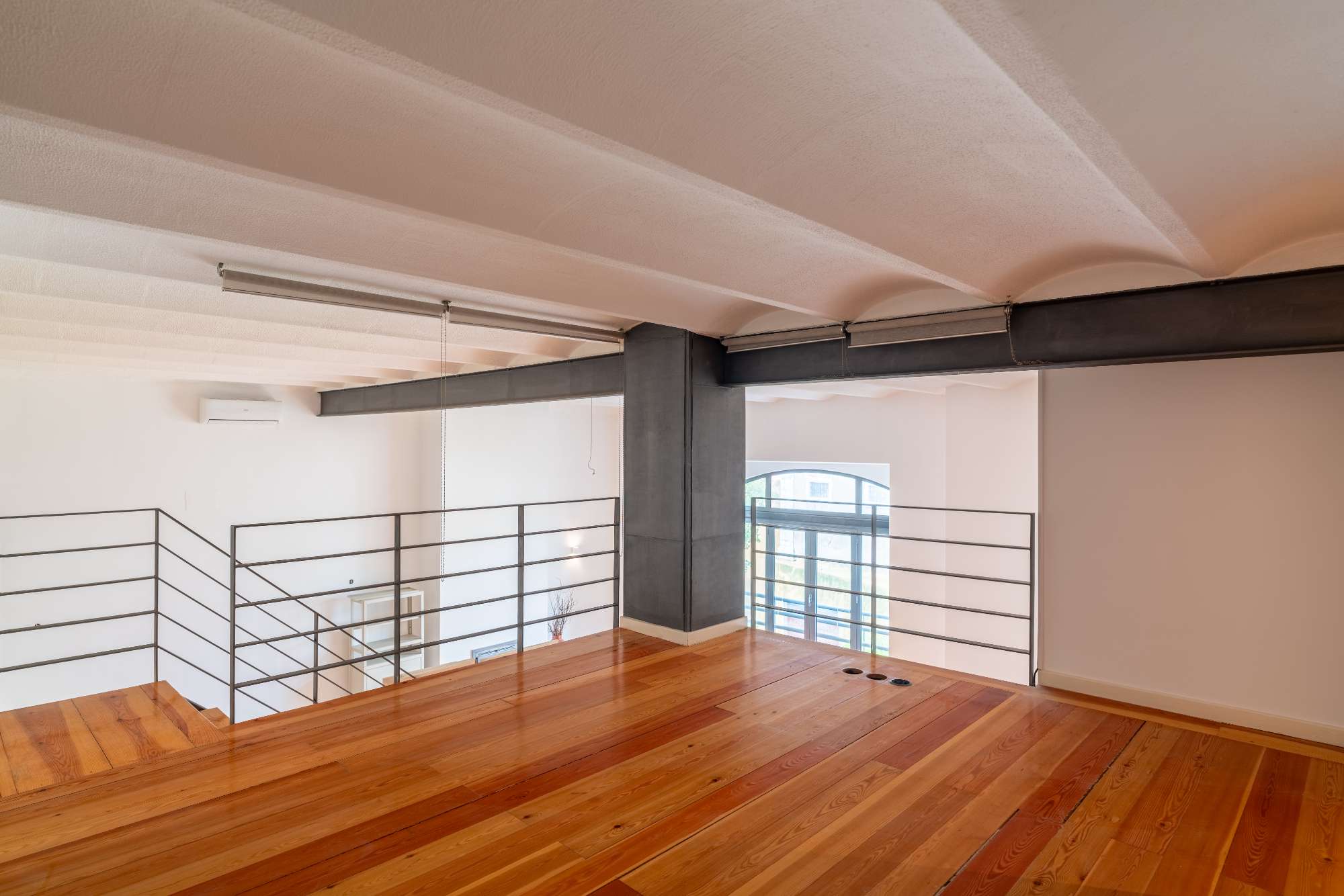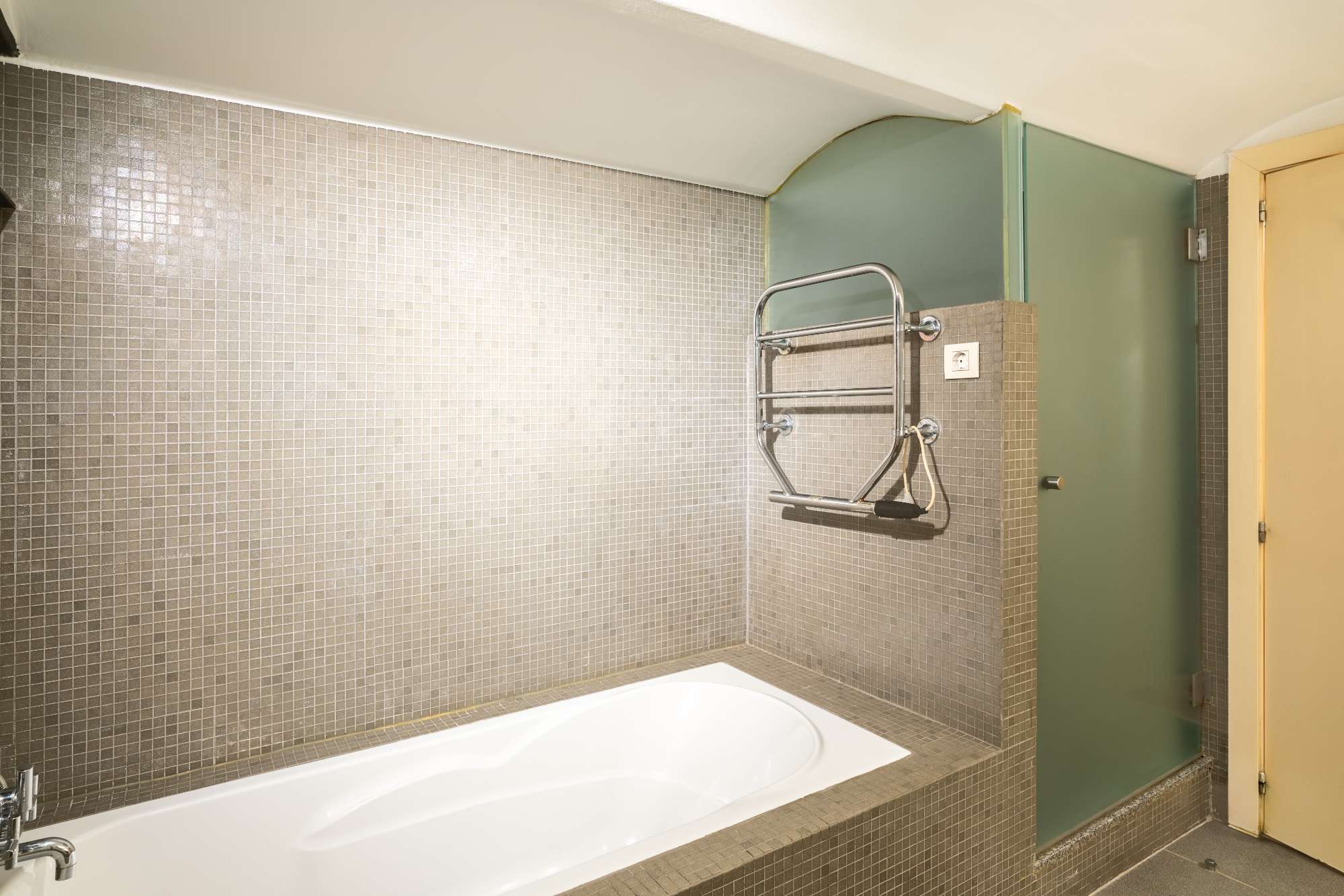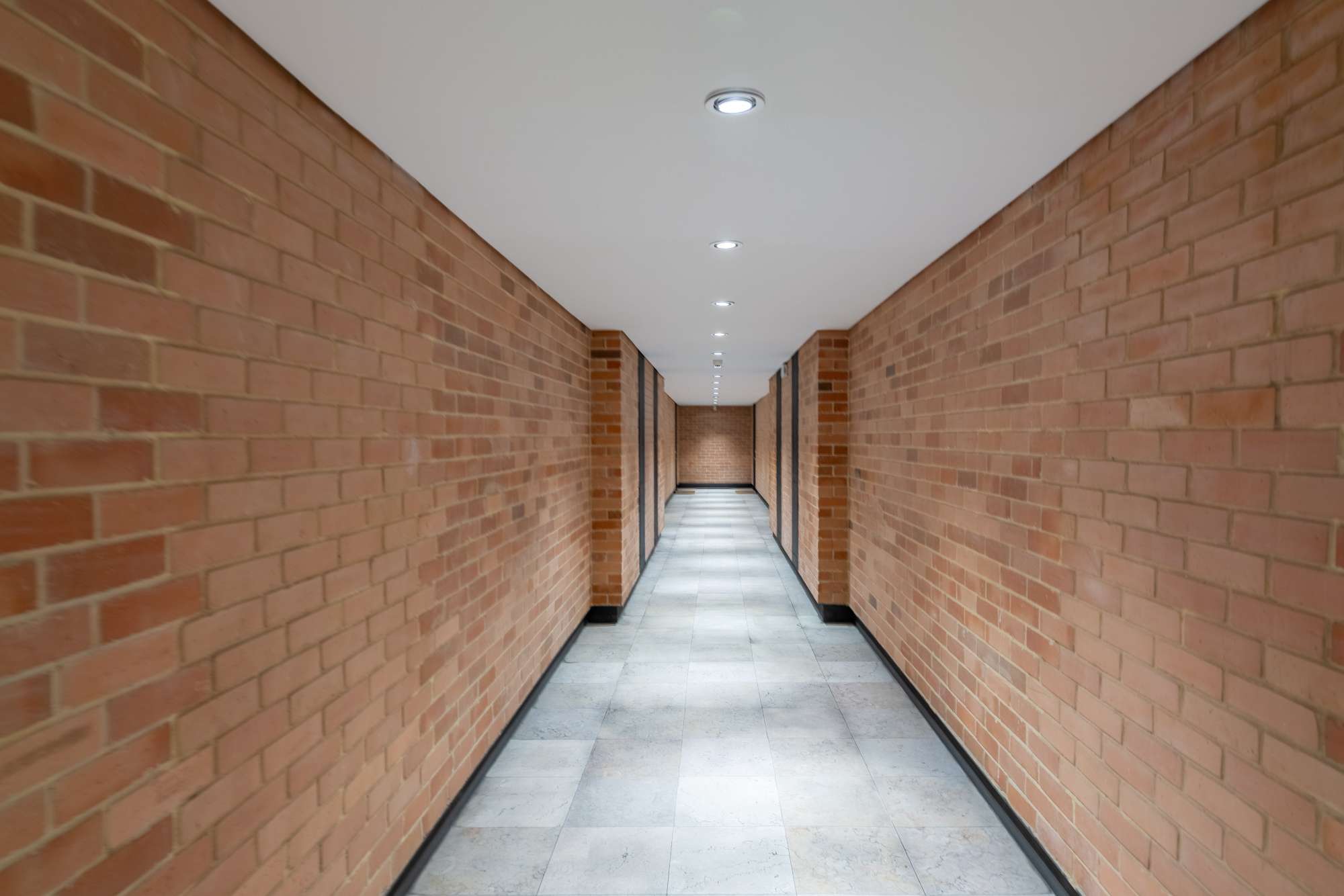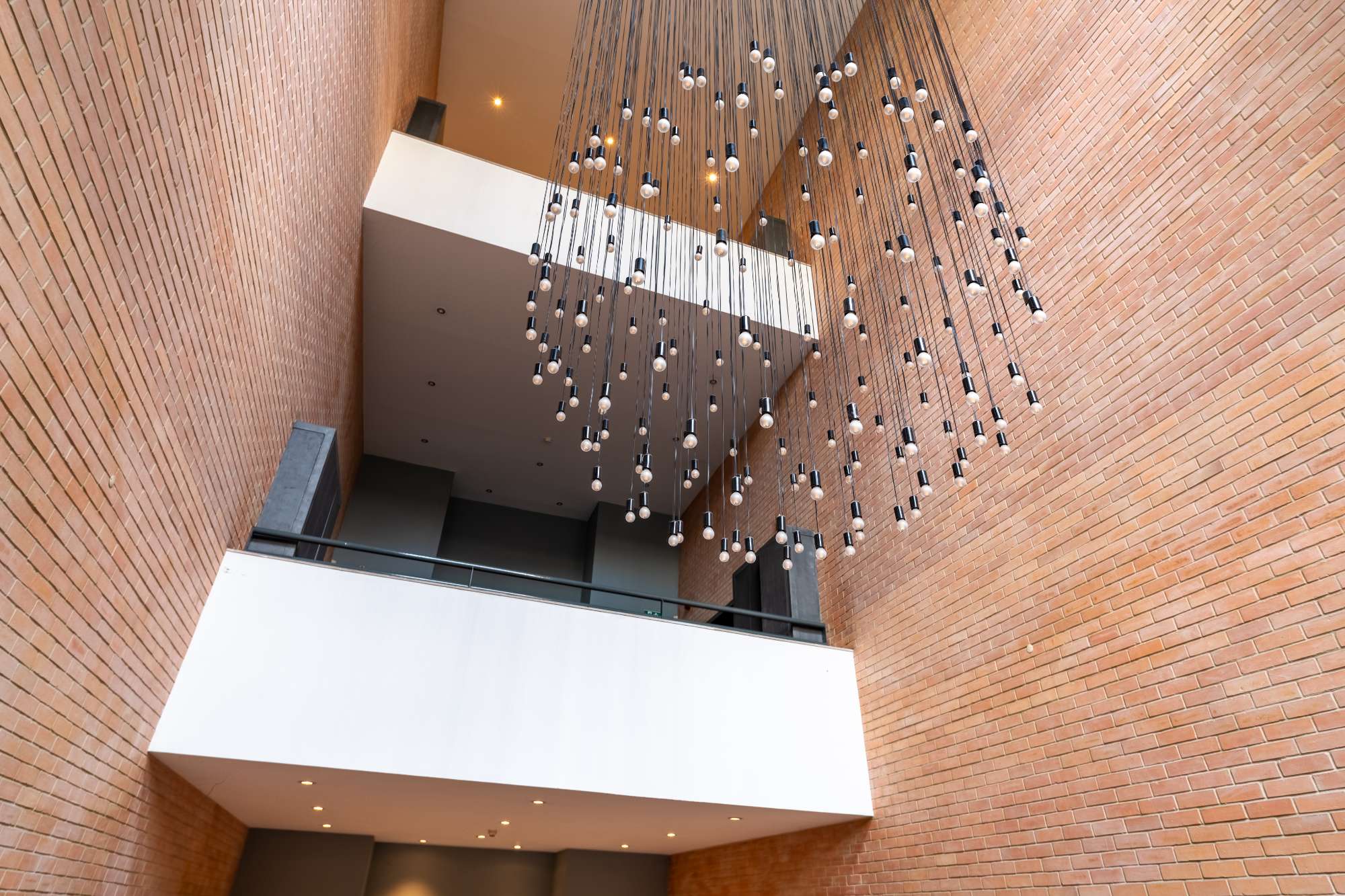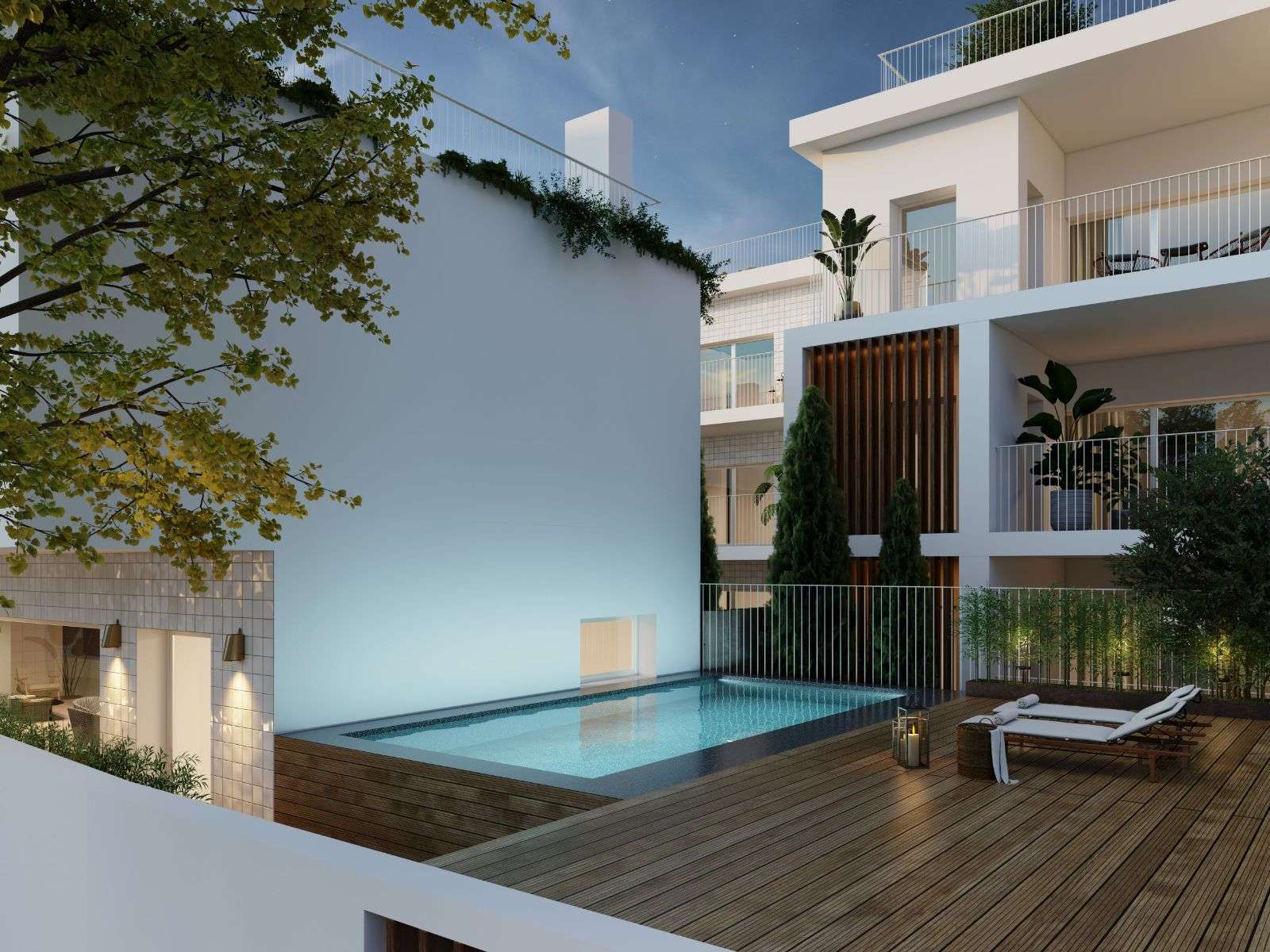1-bedroom loft with mezzanine, garage and storage on Avenida 24 de Julho
Photos
Video
360° Virtual Tour
Description
1-bedroom loft with mezzanine, garage and storage on Avenida 24 de Julho. Near the city centre, River Tagus, marinas, Cuf Tejo Hospital, shops, public transport, restaurants and cultural facilities.
This property has 167 sq m of gross private area, a garage space and a 7 sq m storage unit, and is spread over two levels as follows:
The ground floor consists of a large open-plan dining room, kitchen and living area and a guest bathroom (that can be transformed into a full bathroom).
The first floor (mezzanine) is accessed via a staircase, and features a suite. The communal areas of this building have been renovated. The property layout and its location mean it is bright and offers views over Avenida 24 de Julho.
Features:
– High ceilings characteristic of the industrial style
– Air conditioning
– En suite bedroom
– Fully fitted kitchen with fridge, oven, hob, extractor fan, washing machine, dishwasher and microwave
– Pantry area
– Garage
– 7 sq m storage
Sitting on the edge of the Tagus, Alcântara covers an area of 4.39 km2 and has a population of 13,911. The parish was created on 8 April 1770, when it was called São Pedro in Alcântara due to the transfer to this area what was until then the parish of São Pedro in Alfama.
It is often associated with the Arabic word “Al-quantãrã”, “the bridge”, referring to the existence of a bridge over the river Alcântara, which has now disappeared.
Alcântara has hills and valleys, along with natural resources on the banks of the river and fertile land that allowed a rich and varied agriculture, with many vegetable gardens in the alluvial valleys, vineyards and cereals, and limestone quarries with lime kilns. It was these conditions that attracted people to settle here during the Muslim occupation, albeit spread apart. It was in the 18th century that Alcântara began to urbanise, coinciding with the creation of the parish.
The factory buildings from the late 19th century, which so marked the neighbourhood in the first decades of the 20th century, have since been abandoned. The industrialisation of Alcântara in the 2nd half of the 19th century gave way, a hundred years later, to the inverse process and a profound social transformation, and most of the properties today are residential and commercial buildings.
-PROP-007179
Details
- Price: €990,000
- Property Size: 167 m²
- Bedroom: 1
- Room: 1
- Bathrooms: 2
- Garage: 1
- Property Type: Apartment
- Transaction Type: For Sale
Energy Classification
- Energy Class: C
- A+
- A
- B
- B-
-
| Classe energética CC
- D
- E
- F
- G
Similar Listings
3-bedroom apartment with 247 sqm total area, [or sale in Belém, Lisboa
Lisbon, Lisbon, BelémBedrooms: 3
Bathrooms: 5
Garage: 2
247 m²
- Apartment
- PROP-030898
3-bedroom apartment with swimming pool and parking in Junqueira
Lisbon, Lisbon, AlcântaraBedrooms: 3
Bathrooms: 4
Garage: 2
246 m²
- Apartment
- PROP-027846
3 bedroom apartment with balcony and parking in Avenidas Novas
Lisbon, Lisbon, Avenidas NovasBedrooms: 3
Bathrooms: 3
Garage: 1
133 m²
- Apartment
- PROP-027749
4-bedroom apartment near Amoreiras with views over the city
Lisbon, Lisbon, CampolideBedrooms: 4
Bathrooms: 4
Garage: 2
196 m²
- Apartment
- PROP-030721

